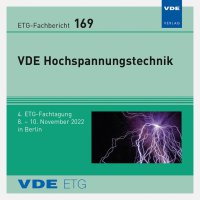Magnetic-Optical-Plasma-Analysis in a Vacuum Model Switch with RMF-Contacts
Konferenz: VDE Hochspannungstechnik - 4. ETG-Fachtagung
08.11.2022 - 10.11.2022 in Berlin, Germany
Tagungsband: ETG-Fb. 169: VDE Hochspannungstechnik 2022
Seiten: 6Sprache: EnglischTyp: PDF
Autoren:
Dorsch, Christian; Philipp, Manuel; Hinrichsen, Volker (Technical University of Darmstadt, High-Voltage Laboratories, Darmstadt, Germany)
Weber, Benjamin; Kurrat, Michael (Technical University of Braunschweig, Institute for High Voltage Technology and Electrical Power Systems, Braunschweig, Germany)
Inhalt:
Vacuum interrupters are state of the art in medium-voltage power grids. By means of continuous development, they are also being introduced in the high-voltage grid as climate-friendly alternative to SF6 circuit breakers. The objectives of the vacuum interrupter development are therefore an increased switching capacity, while improving the service life. The service life of the vacuum interrupter is largely determined by the stress on the contact pieces. When opening the contacts, a plasma consisting of metal vapour is formed, which conducts the current up to the final interruption at currentzero. At currents above 10 kA, the plasma contracts to a columnar vacuum arc, which leads to strong local melting of the contact material. This greatly reduces the switching capacity and service life of the vacuum circuit breaker. To reduce the local heating of contact material, one solution is a magnetic driven plasma motion by a special contact geometry, which distributes the heating energy evenly over a larger area. For further improvements of vacuum interrupters, it is necessary to get a better understanding of the current density distribution in the contact gap and the behavior of the metal vapour plasma. As part of the here presented research a vacuum model switch was developed that allows simultaneous optical and magnetic analyses, both being established methods for the required investigations. Two angled arms in combination with a mirror system allow a three-dimensional analysis of the plasma movement and intensity with only one high-speed camera. Additionally, a magnetic-field measuring system consisting of several Hall-Sensors is positioned around the vacuum chamber at the contact level. The position and rotational speed of the contracted plasma column can be determined from the magnetic field distribution. The evaluation of the results, given by the two measuring methods, allows their comparison and thus the cross-validation of the arc movement. Building on previous work, this paper presents the magnetic measuring system and its function. For this investigation, short-circuit current interruptions were performed in a synthetic test circuit at 35 kA (peak/50 Hz) on the vacuum model switch containing radial magnetic field (RMF) contacts. The evaluated results from both measuring systems are shown und compared. This includes the position and the rotational speed of the contracted plasma column.


